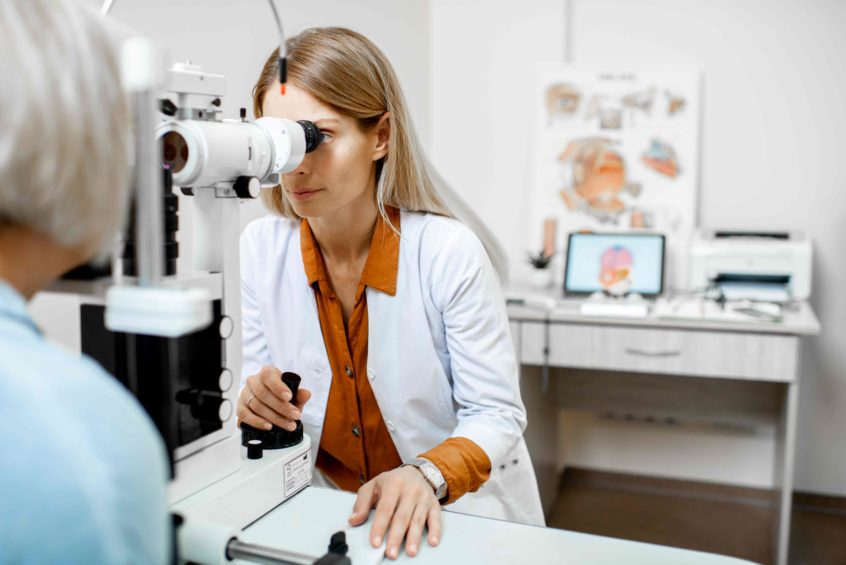February is AMD and Low Vision Awareness Month, a time to raise awareness about age-related macular degeneration (AMD) and the challenges faced by those with low vision. In this article, we will explain what AMD is and provide tips for reducing the chances of getting it. Whether you are at risk for AMD or are already living with low vision, there are steps you can take to protect and maintain your vision. During Low Vision Awareness Month, let’s learn more about AMD and low vision.
What is AMD?
AMD, or age-related macular degeneration, is a degenerative eye condition that affects the macula, the central part of the retina responsible for sharp, central vision. It is a leading cause of vision loss in people over the age of 50 and occurs when the cells in the macula begin to break down, resulting in a loss of central vision. Symptoms of AMD may include blurriness, distortion, or a dark or empty area in the center of your vision. Risk factors for AMD include age, smoking, high blood pressure, obesity, and a family history of the condition. It’s important to be aware of these risk factors and to get regular eye exams to detect AMD early and begin treatment as soon as possible.
How to prevent getting AMD?
You can take several steps to reduce your chances of getting AMD. One of the most important is to get regular eye exams. These exams can help detect AMD in its early stages when treatment is most effective. During the exam, your doctor will examine you for signs of AMD and other eye conditions. They may use various tools and techniques, such as dilating your pupils and looking at your retina. It’s generally recommended to get an eye exam every two to four years if you are under 60, and more frequently if you are over 60 or have a family history of eye conditions. Regular exams allow you to catch any potential issues early on and seek treatment before your vision is significantly impacted.
Lifestyle tips for protecting your vision
In addition to regular eye exams, you can adopt several other lifestyle habits to reduce your risk of developing AMD. One crucial habit is not to smoke. Smoking is a major risk factor for AMD, as it damages the blood vessels in the eye and increases the production of free radicals, which can harm cells. If you smoke, quitting is one of the most important things you can do to protect your vision. Another important habit is maintaining a healthy diet rich in fruits, vegetables, and omega-3 fatty acids. These nutrients may help reduce inflammation and protect the cells from damage. It’s also possible to support your vision with eye health supplements, for example, AREDS2 from Viteyes.com, designed with macular support. It’s also essential to manage any underlying health conditions, such as high blood pressure or diabetes, as these can increase your risk of AMD. Finally, wearing sunglasses with UV protection when outside can help protect your eyes from the damaging effects of the sun.
Adopting these healthy habits can greatly reduce your chances of developing AMD and maintain good eye health.
